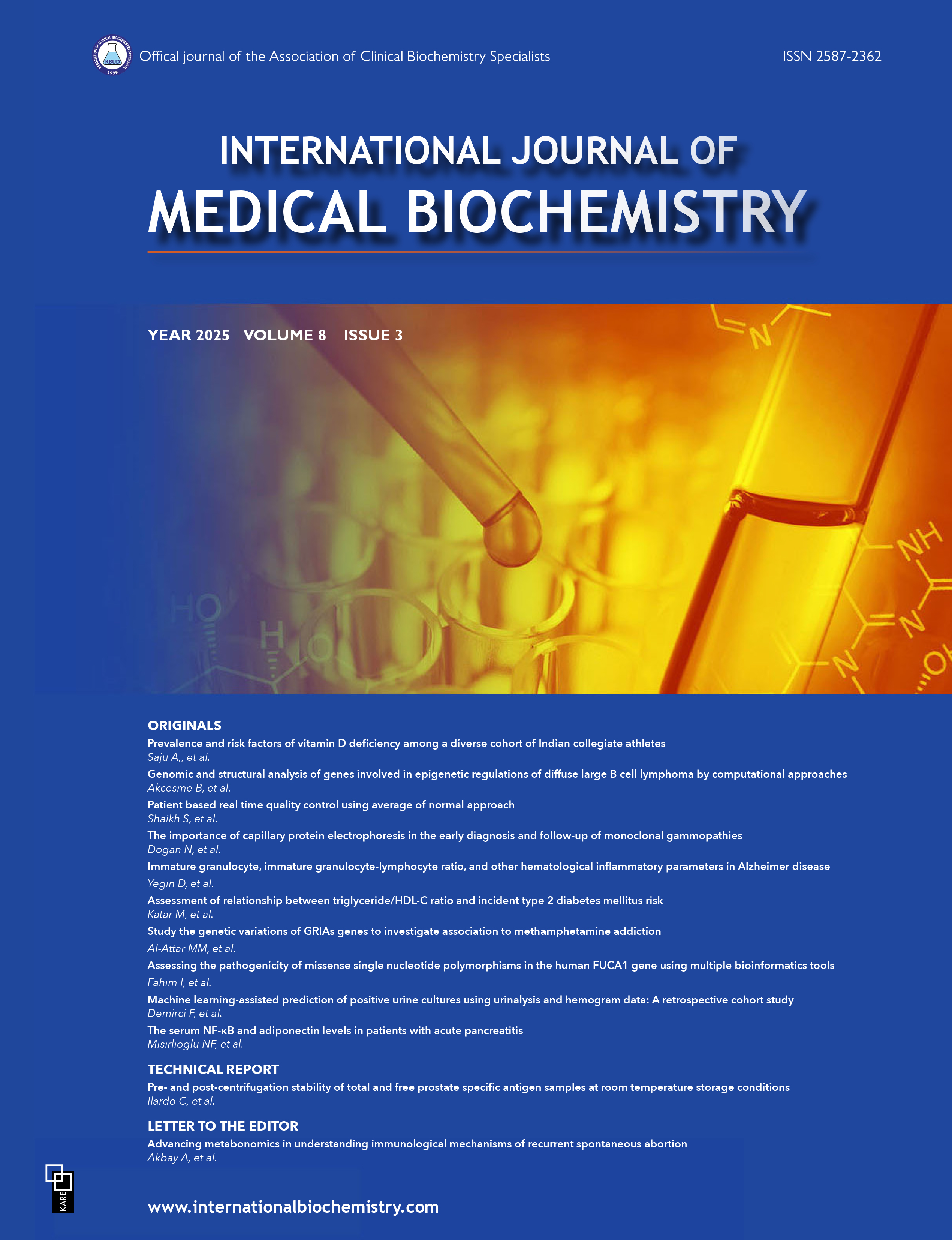Bone markers
Dildar KonukoğluDepartment of Medical Biochemistry, Istanbul University-Cerrahpasa, Cerrahpasa Medical Faculty, Istanbul, TurkeyObjectives: Bone has a dynamic metabolism that includes modeling and remodeling activities. There is continuous communication between 3 types of bone cells; osteoblasts, osteoclasts, and osteocytes. Local stress factors, cytokines, and hormones play an important role in these relationships. The most important structural component of bone is type 1 collagen. During the formation and degradation of collagen, some compounds are secreted into the bloodstream, and in cases of diseases involving the bone, the quantity of these compounds increases both in blood concentration and urinary excretion. Some bone markers are secreted into the circulation during bone formation, and some are released into the circulation through bone resolution. Bone markers reflect changes in bone metabolism due to primary or secondary causes, rather than a specific bone disease. Some factors affecting the results should be considered during the evaluation of changes. These factors include preanalytical effects, such as age, gender, diurnal rhythm, and analytical problems. This review is a summary of the current applications of bone turnover markers and the effects of preanalytical conditions.
Keywords: Bone biochemistry, bone cells, bone markerManuscript Language: English






